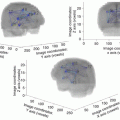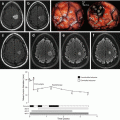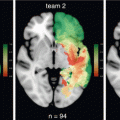Type-1
Type-2
Type-3a
Type-3b
Clinical characteristics
Age, median (IQR), y
45 (36–54)
36 (30–44)
43 (28–49)
57 (46–64)
OS, mean (95% CI), y
16.38 (14.15–NA)
7.88 (6.76–9.70)
9.13 (5.05–NA)
1.83 (1.53–2.23)
Genetic alterations
IDH1/2 mutations
Mutated
Mutated
Wild type
Wild type
1p/19q co-deletion
Present
Absent
Absent
Absent
Common mutations
TERT promoter, CIC, FUBP1, NOTCH1
TP53, ATRX
BRAF (Occasionally)
EGFR, NF1, TP53, PTEN, TERT promoter
Common copy number alterations
Loss of chromosome 4
UPD of 17p
Gain of 7q and 10p
Loss of 11p
Low frequency
Amplification of EGFR
HD of CDKN2A/2B
Gain of 7q and 19p
Loss of chromosome
Glioma methylation phenotype
Positive
Positive
Negative
Negative
Several lesions are relatively specific to Type-2 gliomas, most frequently ATRX mutation and 17p loss of heterozygosity [2, 3]. ATRX mutation is most often a loss of function mutation, and has been found to be almost mutually exclusive with the 1p/19q codeletion. This mutation was found most frequently in anaplastic astrocytomas, and was associated with a significantly better clinical course than those tumors with wild type-ATRX [7].
IDH-mutated gliomas invariably show CpG island methylator phenotype (CIMP). However, there are differences in the CIMP methylation patterns between Type-1 gliomas (CIMP-A) and Type-2 gliomas (CMIP-B), suggesting the 1p/19q co-deletion, TERT promoter mutation, and/or biallelic TP53 mutation affect the pattern of DNA methylation [2, 3]. Other investigators identified a minority of IDH-wild type gliomas distinguished by a unique pattern of DNA methylation, although seen almost exclusively in WHO grade III tumors, and not enriched in WHO grade II subtype [3].
6.2 Intra-Tumoral Genetic Heterogeneity
Each genetic subtype may demonstrate significant inter-tumor heterogeneity in terms of genetic lesions other than canonical IDH1/2, TP53, and TERT promoter mutations, and 1p/19q co-deletion [2]. Regional heterogeneity may be closely correlated with the history of clonal evolution, illustrating how a tumor expands outward from its origin, intermingling cells with different genetic mutations in the periphery, to increase overall heterogeneity. Despite the presence of parallel mutations involving common targets, prominent regional heterogeneity raises concern that sequencing of bulk tumor may not detect rare but important mutations or tumor cell subpopulations that exist at low levels.
For instance, an oligodendroglioma, IDH1 mut, 1p/19q co-del seems to arise from somewhere with IDH1, TERT promoter, and TCF12 mutations and 1p19q LOH and propagated to a common branch-point by acquiring mutations in CIC (p.R202W), FUBP1 (c.1041+1G>-), and FUBP1 (c.1706-1G>A). The tumor then further extends to a location with mutations in MLL3, ARID2, and ARID1B, another location with CIC (p.A235T) and SMARCC2 mutations, and the common branch with CIC p.Q172X, CIC p.T767fs, or to different directions with CIC p.R1515C and MLL2, frequently showing confluence in periphery between multiple components from surrounding branches.
This is also true in IDH-wild type gliomas; with the lack of common, canonical mutations, IDH-wild type gliomas are more heterogeneous than IDH-mutated gliomas [2, 3]. TERT promoter mutations have been demonstrated in Type-1 and Type-2 lower grade gliomas [8], and have a differential effect on progression free survival dependent on the 1p/19q codeletion status. Specifically, in IDH-wild type tumors the presence of a TERT promoter mutation correlated with a shorter progression free survival interval, while in IDH-mutated tumors, a TERT promoter mutation demonstrated an increased progression free survival. The interactions between 1p/19q codeletion, TERT promoter mutation, and other concurrent mutations are not yet completely understood, and a better delineation of the interactions of these mutations may help to further classify lower grade gliomas.
Stay updated, free articles. Join our Telegram channel

Full access? Get Clinical Tree






